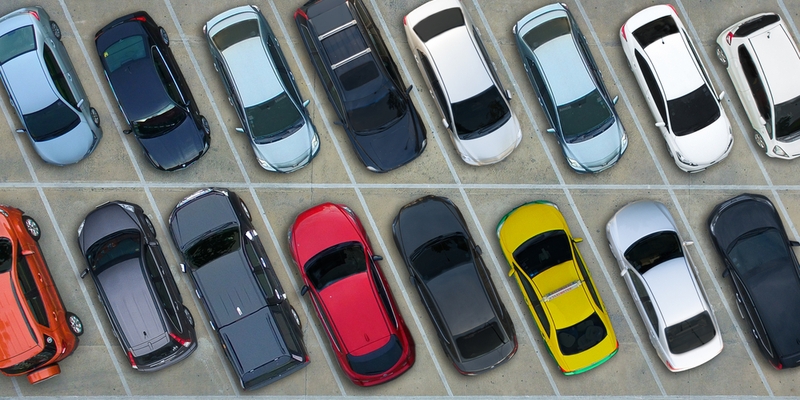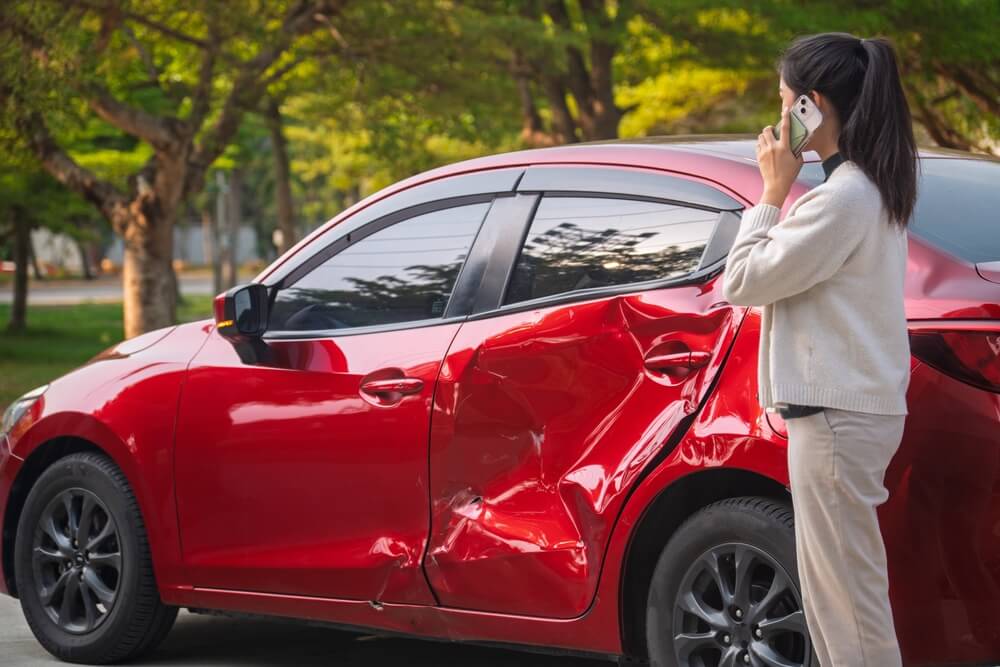
If you are not redirected within 30 seconds, please click here to continue.
Samedi: 10h – 16h HAE

If you are not redirected within 30 seconds, please click here to continue.
If you are not redirected within 30 seconds, please click here to continue.
Most and least expensive cars to insure by fuel type in 2023

Table of Contents
This year has been hard on Canadian drivers and their wallets. For those looking to purchase, inflation and a supply chain shortage have driven car prices for both new and used vehicles up – with the price of second-hand cars even surpassing that of a brand-new one, in some cases.
Meanwhile, those who already own cars may see a higher auto insurance premium this year as most Ontario insurance providers have been approved for rate changes.
To give you an idea of auto insurance rate increases, data collected from the RATESDOTCA Insuramap estimates that Ontario’s average auto insurance premiums jumped 12% from Q4 2021.
Factors that affect your insurance premium
There are several factors insurance providers use to determine auto insurance rates, including the driver’s age, driving history, postal code, and previous claims history. They also pay close attention to how likely a vehicle is to be stolen, or require expensive repairs, based on where it’s parked and the make and model of the car itself.
“A luxury vehicle with luxury parts would be more expensive than a base model, like a Honda Civic or something,” says Monique Marcotte, insurance broker with MacDougall Insurance in Sudbury. “Also, how popular the vehicle is – the more vehicles on the road, the more vehicles in accidents, the more data insurance companies have.”
That translates into slightly higher premiums for cars that aren’t as common.
“We’ll see a lot more fluctuation for a Ford 150 or a Dodge Ram than a Chevrolet Impala,” she says.
Another datapoint that insurance companies weigh heavily is theft rate. Recent data suggests that vehicle thefts are an increasing concern among drivers. In Ontario, a car is stolen every 48 minutes, with some models more tempting to thieves than others.
Using the RATESDOTCA auto insurance quoter, we looked at how the make and model of a vehicle affects insurance rates. We ranked them according to the most and least expensive to insure in 2023, within different fuel types (gas, diesel, hybrid, and electric), and included information on their estimated annual fuel cost.*

Gas vehicles: most and least expensive to insure in 2023
- Most expensive: 2022 Lamborghini Aventador LP 780 Ultimae 2DR AWD — $379.08 / month.
- Estimated annual fuel cost: $4,730
- Least expensive: 2021 Jeep Gladiator Sport 4DR 4WD — $168.50 / month
- Estimated annual fuel cost: $3,075
Despite government initiatives to transition to EVs, gas isn’t going anywhere fast. According to Statistics Canada, gas-powered vehicles still made up 81.4% of new vehicle registrations in Q4 2022 — down from previous years, but still the overwhelming majority. As such, there are still a wide variety of gas cars on the market, which come with a wide range of insurance premiums.
The quoter data found a difference of $220.58 in premium price between the most expensive car to insure — a 2022 model Lamborghini — and the least expensive car to insure, the 2021 Jeep Gladiator.
There’s a few reasons for the big dip in rates: First, Lamborghinis are luxury cars, which makes them both enticing to thieves and harder to repair. This model also has a removeable hard-top which is susceptible to weather damage and is uniquely challenging to repair or replace.
There’s also the speed. The 2022 Lamborghini Aventador has a top speed of 355km per hour. Fun for speed demons, but a tad more vulnerable to crashes than your average family-friendly sedan — which could drive up more claims.
That leads us to the Jeep. Jeep Gladiators — like most pickups — are highly sought out by thieves, a factor which may bump up its associated insurance premium.
However, as far as pickups go, it’s less prone to theft than the Ford F-150 or Dodge Rams of the world, and isn’t listed on Canada’s Most Stolen Vehicles list.
Diesel vehicles: most and least expensive to insure in 2023
- Most expensive: 2018 BMW 328d xDrive 4DR AWD — $272.92 / month
- Estimated annual fuel cost: $1,330
- Least expensive: 2022 Chevrolet Silverado 1500 Cust TRL Crew Cab 4WD Diesel — $179.25 / month
- Estimated annual fuel cost: $3,300
While diesel cars are often seen more expensive than gas-powered cars due to their more sophisticated engines, Marcotte says that insurance rates don’t deviate too much when it comes to their fuel source alone.
“Nowadays, I don’t see very many diesel vehicles come our way, and usually when we do it’s an older truck,” says Marcotte. “We don’t have very many brand-new diesel vehicles on our books here, because they’re just a lot harder to come by these days.
Instead, the estimated premiums associated with any specific diesel-powered car would likely rely on other factors, including the overall popularity of the car and value of the vehicle — no surprise, then, that the sleek and speedy BMW with its luxury features is more expensive to insure than the all-American Chevy pick-up.
Electric vehicles: most and least expensive to insure in 2023
- Most expensive: 2023 TESLA MODEL X PLAID 4DR AWD — $291.50 / month
- Estimated charging cost: $642
- Least expensive: 2018 KIA SOUL EV 5DR — $171.25 / month
- Estimated annual charging cost: $502
EVs continue growing in the Canadian market, taking a bigger and bigger slice of new vehicle registrations every year.
Not only are EVs friendlier to the planet, there’s a lot of money to be saved without having to fill up every few days or weeks. Plus, the government offers a rebate of up to $5,000 to Canadian’s purchasing zero-emission vehicles, and some insurance companies offer a green discount for policyholders who have purchased or leased an EV,
While it’s too early in adoption for insurance companies to say definitively that parts like the lithium-ion batteries that run the car are more expensive to insure, drivers will still see a higher premium placed on Tesla models than other electric cars.
This is for a number of reasons. Just like other luxury cars, Teslas are priced with premiums commensurate with their higher dollar value. But Teslas also have self-driving features, and the Model X come with 17-inch touchscreen, making the hardware and software much trickier to repair and replace.
In fact, drivers can only get them repaired at certified Tesla body shops.
“Tesla will definitely see a premium impact there because they’re a lot more luxurious,” says Marcotte. “If there was ever an accident, we can’t just bring a Tesla to any body shop. Most likely it would have to go back to a dealership that can service that type of vehicle.”
Hybrid vehicles: most and least expensive to insure in 2023
- Most expensive: 2023 Hyundai Sonata Ultimate Hybrid 4DR — $251.92 / month
- Estimated annual fuel cost: $1,250
- Least expensive: 2023 Ford Maverick XLT Hybrid SuperCrew 2WD— $161.50 / month
- Estimated annual fuel cost: $1,600
Included in the auto industry’s transition towards a greener and more fuel-efficient future is the hybrid vehicle. These cars combine a gas-powered engine with one or several electric motors to give drivers the option to ride fuel-free — or at least fuel-friendlier — than their fully gas-powered counterparts.
While there are definite savings to be had at the pump, there may not be a huge difference when it comes to insurance premiums based on the power source alone, says Marcotte.
“If we’re looking at a hybrid Hyundai versus a gas Hyundai, I can’t say that I’ve seen a huge difference between the two,” she says.
However, that doesn’t mean that premiums for hybrids and EVs couldn’t increase in the future with more widespread adoption. For example, if they’re later found to be more expensive to fix, or if more rebates keep coming out for hybrid vehicles, she says, she could see premiums start increasing.
“The data just isn’t there, and insurance rates are 100% based on data,” she says. “They’ve been around for a while, but on the insurance side, they’re still very new. But I can see maybe five to ten years down the road, insurance premiums for them changing.”
Which car should you buy? The one that you want.
Despite what the differences in premiums above would suggest, the make and model of a car are just one indicator of what a premium is. If you’re pining away for a Lambo, don’t let the potentially higher premiums sway you from getting it.
“The advice that I give to my clients when their hearts are dead set on a vehicle is: Buy the vehicle that you want,” says Marcotte. “You might see your insurance go up, but we can move companies at renewal or apply additional discounts. I would hate for someone not to get a vehicle that they want just because their insurance might go up a bit.”
But what if you’re not dead set on a particular vehicle?
“If I’m dealing with a parent, for example, who wants to get a vehicle for their child?” she says. “Depending on their budget, a larger Sedan is usually a bit friendlier on insurance.”
The X Factor: Your insurance company
Beyond the make and model, driver history and location and parking conditions of the car, there’s another hidden X factor to determining your rate. That’s your insurance company. No insurance company is the same when it comes to setting their rates.
“Insurance rates are governed by Ontario, but every insurance company gets to file their own rules that get approved,” says Marcotte.
She brings up the example of insurance companies which appeal younger drivers by offering first year discounts and Good Student discounts. But a young driver who approaches another company focused on an older demographic of more established drivers with a home and multiple vehicles, their rate might be doubled.
“We work with about 15 different companies,” she says. “The prices are always different across the board, but they’re all [based on] the same information.”
One way to ensure that you are getting the lowest auto insurance rate for your vehicle and coverage requirements is to compare rates from multiple insurance providers.
*All estimated annual fuel costs are based on the corresponding Natural Resources Canada Fuel Consumption Guide associated with each vehicle model year, or the next closest guide year that said model is featured in. This includes guides from 2018, 2021, 2022 and 2023.
Methodology
RATESDOTCA Insurance Quoter data is based on the following driver profile:
- 35-year-old male with a clean driving record (no collisions, suspensions, or traffic tickets).
- Lives in the M6H 1X1 postal code of Toronto, Ontario
- Listed on an insurance policy for 19 years (since he was 16 years old)
- Listed with current insurance company for two years
- Policy includes collision and comprehensive coverage
- Vehicle is financed, used for personal use, and parked in a private driveway. Drives five kilometres to and from work daily (10,000 kilometres annually)
- One vehicle and one driver listed on the policy
- Has opted for winter tires
- Did not opt for any discounts related to telematics or bundling.
Get money-saving tips in your inbox.
Stay on top of personal finance tips from our money experts!









